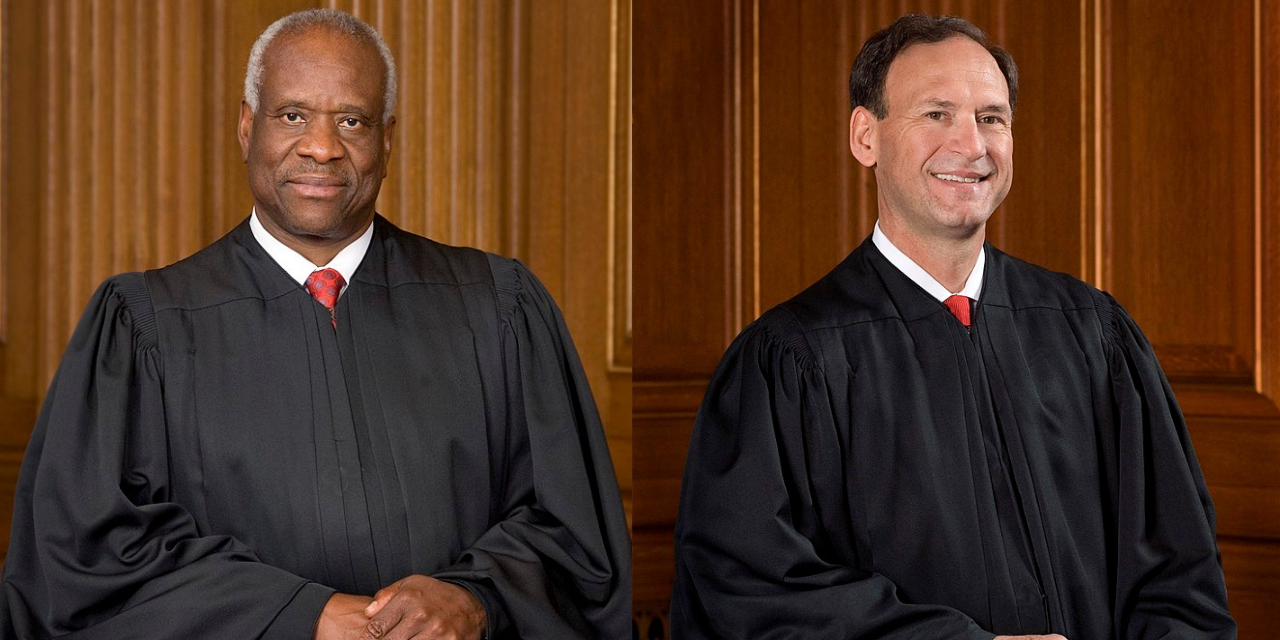A new bill introduced in Congress to force Justice Clarence Thomas and other conservatives into retirement by imposing term limits is not just a cheap political ploy, it’s entirely unconstitutional.
Liberals in Congress may be upset at the last few (conservative) appointments to the U.S. Supreme Court, but they are apoplectic after watching the high court overturn Roe v. Wade in the Dobbs decision this past June. While not surprising, I wonder why they weren’t as upset 50 years ago when a different set of justices created the “right” to abortion out of thin air.
I’m kidding; we all know why liberals weren’t upset in 1973. Or in 2003 when the court created a “right” to homosexual sex in Lawrence v. Texas. Or in 2015 when the court created the “right” to same-sex “marriage” in Obergefell v Hodges. When the court behaved as a “super legislature” to enact policies they preferred while trampling all over the Constitution, liberals were fine with the court and hastened to laud the justices who did their bidding as “mainstream.”
Now that the judicial philosophy of a majority of the justices is based on originalism and textualism, however, liberals have decided there’s a “legitimacy” crisis at the court, aided by misleading polls on Roe v. Wade and popularity polls that show the Supreme Court’s numbers slipping, down from 35% in 2006 to 25% in June, after the leaked version of the Dobbs ruling became public.
So why are liberals in Congress, whose approval rating (16%) is lower than the Supreme Court’s, focusing on the court rather than on themselves?
Another rhetorical question, I’ll admit. You already know why. Because liberals have grown used to getting the court to impose unpopular social policies that voters would never stand for.
But with the judicial pendulum swinging to the conservative side, those days are over, right? Maybe not.
A new bill has been introduced in the U.S. House of Representatives and the Senate called the “Supreme Court Tenure Establishment and Retirement Modernization (TERM) Act.” It establishes 18-year term limits for the justices, allows the then-serving President of the United States to appoint a new justice every two years, and restricts the court to deciding cases using only nine justices. It has other strange features you can read for yourself.
Its first and most obvious effect, of course, would be to force Justice Clarence Thomas, who is the most senior justice currently serving, into “senior status” – another word for retirement – where he can do no further harm to the liberal agenda by constantly asking what the Constitution might require.
And Justice Samuel Alito would be the next to go, er, “retire.”
The TERM Act is a non-serious piece of legislation. The bill is so unconstitutional it won’t make it past the first court that considers it, even assuming Congress will stoop to passing it.
Why is it unconstitutional?
The Supreme Court was not created by Congress; it was actually established by the U.S. Constitution (Article III). And it specifically requires that justices and other federal judges be allowed to serve “during good behavior,” an English phrase which Alexander Hamilton explained in Federalist Paper #78 was intended to be a lifetime appointment, subject only to death, voluntary retirement, or removal by impeachment.
Simply put, to change the Constitution’s provisions prescribing the lifetime appointment of federal judges, you need a constitutional amendment. A law passed by Congress can’t supersede the Constitution.
And forcing a justice to “retire” with full pay might look innocent enough, but it’s just as unconstitutional as if the bill called for someone to pull a black van up to the back door of the Supreme Court and whisk away Thomas and Alito, never to be seen or heard from again.
Oddly enough, it is within the power of Congress to “pack” the court with additional justices, since the Constitution does not set forth a particular number of justices. In fact, since our Constitution was ratified in 1789, Congress has changed the number of justices several times. Since 1869, however, the number of justices has been fixed at nine.
President Franklin Roosevelt floated the idea of adding justices during the New Deal out of frustration that the high court was striking down several of his policies as unconstitutional, but the proposal never gained popularity because of its blatantly political purpose, and was abandoned when the court started approving his policies after the famous “switch in time that saved nine.”
Fast forward to today, and the idea of court-packing is still extremely unpopular among Americans by a 2 to 1 margin, who sense – correctly – that whatever party gains power in Washington, D.C., can play that same political game, eventually harming the court itself.
You don’t have to take my word on that alone, because a commission organized by President Joe Biden specifically tasked with looking at court-packing possibilities pointedly refused to recommend it.
However, polling shows that the American public, also by a margin of 2 to 1, is open to term limits on justices.
So, it’s not hard to understand why liberals chose to go the route of term limits in the new bill, even though the method they chose is assuredly unconstitutional. They will at least be able to write home to constituents and tell them that they are “doing something” about the high court.
Such is politics at its worst.
It’s too bad that liberals in Congress don’t realize that the current conservative judicial philosophy prevailing at the Supreme Court will, if left unhindered, leave policy to Congress, something that should be attractive to representatives and senators on both sides of the political aisle who are interested in what the democratic process can produce.
But when you’re used to winning with just five votes at the Supreme Court, it’s hard to play by the rules.
Photo from Wikimedia.






